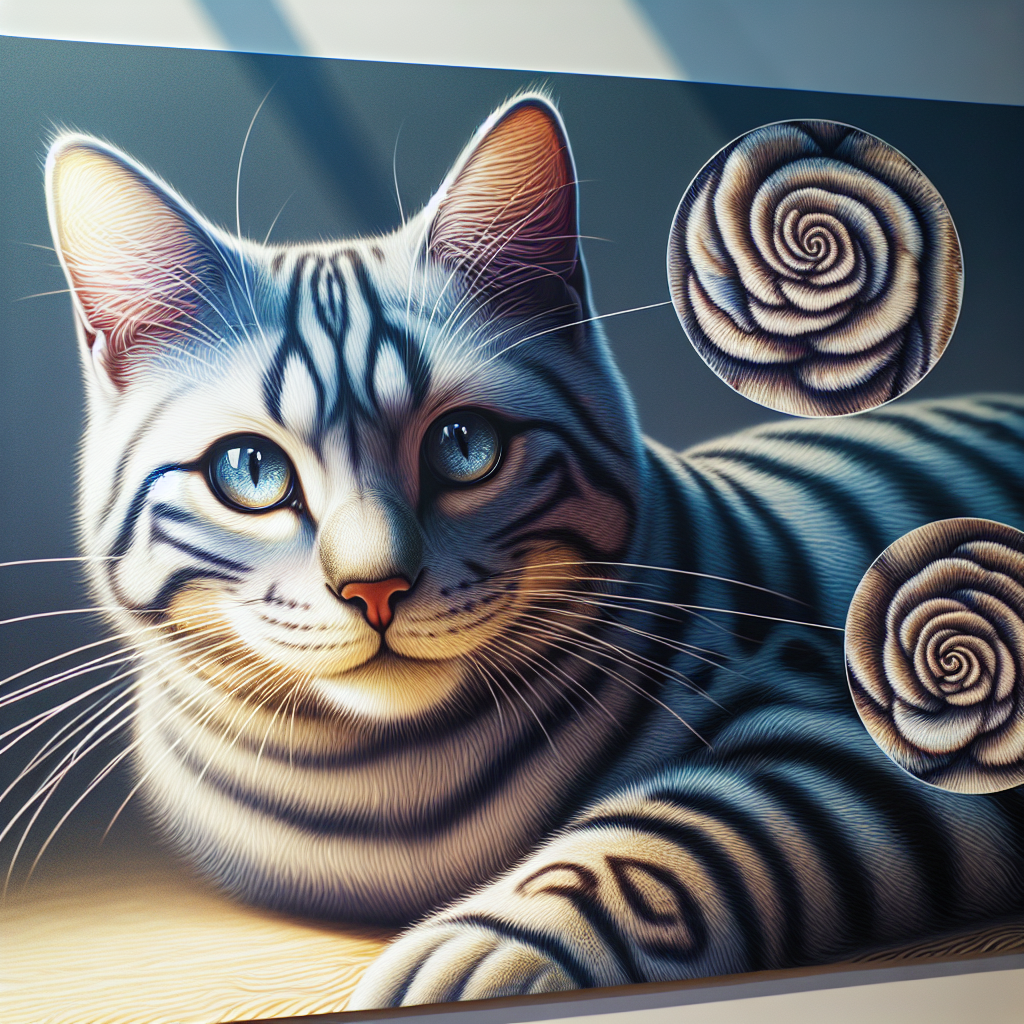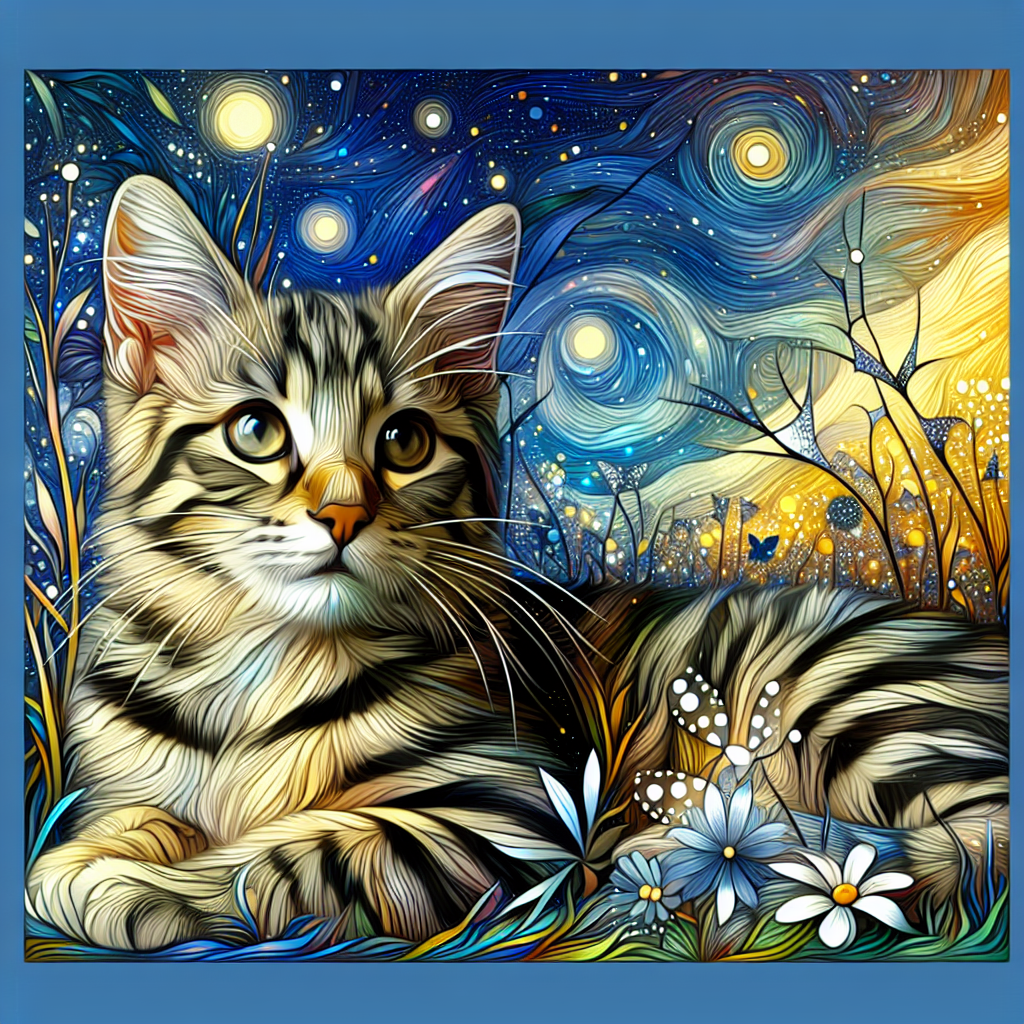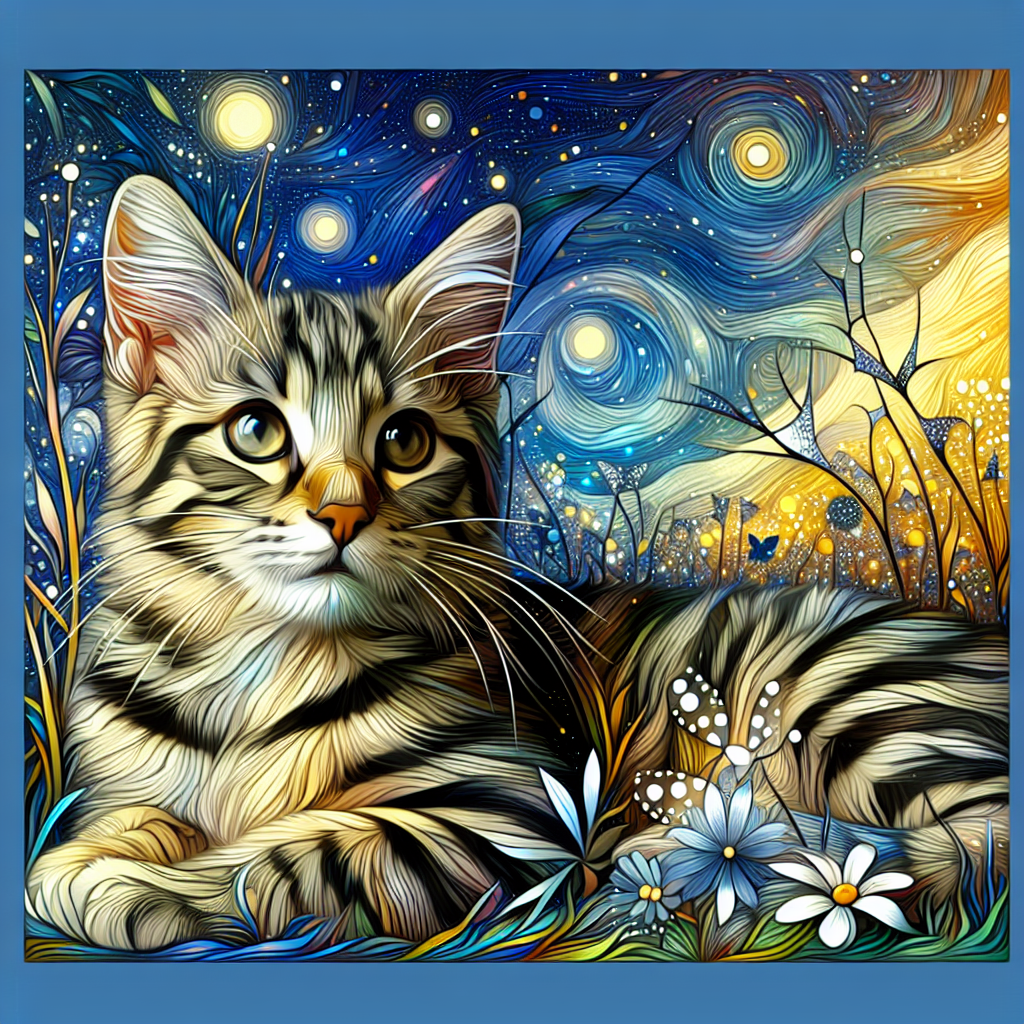Tabby cats, beloved companions to many, are known for their distinctive coat patterns. But have you ever wondered if these charming felines also possess rosettes? In this article, we’ll explore the fascinating world of tabby cats and unravel the mystery behind their coat markings. Prepare to be enthralled as we discover the truth about whether or not tabby cats have rosettes. So, sit back, relax, and embark on this delightful journey into the enchanting world of our beloved tabby companions.

What are tabby cats?
Tabby cats are one of the most common and beloved types of cats. They are known for their distinct coat patterns, which are characterized by stripes, swirls, and spots. Tabby cats can come in various colors, including brown, gray, orange, and even silver. They are often recognized for their friendly and sociable nature, making them popular companions for both individuals and families.
Definition of a tabby cat
A tabby cat is not a specific breed but rather a coat pattern that can be found in various cat breeds. The term “tabby” refers to the pattern on a cat’s coat, which consists of stripes, whorls, or spots. This unique coat pattern sets tabby cats apart from other types of cats. Despite being found in different breeds, tabby cats share similar physical characteristics and behavioral traits that make them easily identifiable.
Characteristics of tabby cats
Tabby cats possess a variety of distinguishing characteristics. Their coats feature a combination of dark and light markings in various patterns, such as mackerel, classic, spotted, and ticked. These patterns can be seen on a tabby cat’s body, tail, and even their face. Tabby cats also tend to have an “M” shape on their forehead and expressive, almond-shaped eyes.
In terms of temperament, tabby cats are known to be friendly, affectionate, and outgoing. They often enjoy interacting with their owners and are known for their social nature. Tabby cats also tend to be intelligent and curious, making them great companions for interactive playtime and mental stimulation.
History of tabby cats
The history of tabby cats dates back centuries, and their origins can be traced to ancient Egypt. They were highly regarded by the Egyptians, who believed that they possessed special powers and even worshipped them as sacred animals. Tabby cats then spread throughout Europe and made their way to other parts of the world through trade routes.
Tabby cats became even more popular during the Middle Ages when they were sought after for their excellent hunting skills. Their ability to control vermin, such as rats and mice, made them valuable assets in households and on ships. Over time, tabby cats continued to evolve and became cherished pets in many cultures around the world.
Understanding rosettes
Definition of rosettes
Rosettes are a specific type of marking found on the coats of some tabby cats. They are distinct circular or oval-shaped patches with a darker coloration surrounding a lighter center. Rosettes resemble the shape of a rose, hence the name. These markings add an extra level of beauty and uniqueness to the coat pattern of tabby cats.
Types of rosettes in cats
There are several types of rosettes that can appear on the coat of a tabby cat. The most common types are the donut rosette, where the center is light and encircled by a darker color, and the pawprint rosette, which resembles the shape of a pawprint. Other variations include the arrowhead rosette, the clouded rosette, and the horizontal/marble rosette. Each type of rosette adds its own distinctive flair to the cat’s overall appearance.
Appearance of rosettes in cats
Rosettes can vary in size, ranging from small spots to larger patches on a cat’s coat. They commonly have a contrasting coloration, with a darker hue outlining the rosette and a lighter shade in the center. This contrast highlights the beautiful and intricate designs of the rosettes, giving tabby cats a truly enchanting look.
Do tabby cats have rosettes?
Evidence of rosettes in tabby cats
Not all tabby cats have rosettes. While some tabbies may display these unique markings, others may have different patterns, such as stripes, spots, or whirls. The presence of rosettes in tabby cats is influenced by various factors, including their genetics and breed. Certain cat breeds, such as the Bengal cat and the Ocicat, are more likely to have rosettes in their coat patterns.
Patterns in tabby cats
Tabby cats can exhibit different patterns depending on the combination of genes they inherit. Some common patterns include the classic tabby pattern, which features bold, swirling stripes, and the mackerel tabby pattern, which consists of narrow, straight stripes. Other possible patterns include the spotted tabby pattern and the ticked tabby pattern. Each pattern gives tabby cats a unique and individual look.
Variations in rosettes among tabby cats
When it comes to rosettes, there can be variations in shape, size, and coloration among tabby cats. While some cats may have large, well-defined rosettes, others may have smaller or more subtle ones. The colors of the rosettes can range from rich browns to vibrant oranges or even silvery hues. These variations add to the charm and allure of tabby cats with rosettes.
Genetics behind rosettes in tabby cats
Genes responsible for rosettes
The presence of rosettes in tabby cats is influenced by specific genes. The gene responsible for rosettes is called the agouti gene. This gene controls the distribution and arrangement of pigmentation in a cat’s coat. Different variations of the agouti gene can result in various patterns, including rosettes. The specific combination of genes inherited directly affects the likelihood of a tabby cat having rosettes.
Mendelian inheritance in tabby cats
The inheritance of coat patterns, including rosettes, in tabby cats follows Mendelian genetics. This means that the traits are passed down from parents to offspring according to specific genetic rules. The presence or absence of rosettes in a cat’s coat is determined by a combination of dominant and recessive genes. Breeding two tabby cats with rosettes increases the chances of their offspring inheriting this unique coat pattern.
Other factors affecting rosettes
While genetic factors play a significant role in determining whether a tabby cat will have rosettes, other factors can influence their appearance as well. Environmental factors, such as temperature and sunlight exposure, can affect the expression of certain coat patterns, including rosettes. Nutrition and overall health also impact the quality and appearance of a cat’s coat, potentially enhancing or diminishing the visibility of rosettes.

Similarities and differences with other cat breeds
Comparison with Bengal cats
Bengal cats are often mistaken for tabby cats due to their resemblance in coat patterns, including rosettes. However, Bengal cats are a distinct breed in their own right. Unlike tabby cats, which can be found in various breeds, Bengal cats are a breed specifically created through selective breeding. They were developed by crossing domestic cats with Asian leopard cats, resulting in their striking and wild-looking appearance.
While both tabby cats and Bengal cats can have rosettes, there are differences in their coat patterns. Bengal cats often have larger and more pronounced rosettes, while tabby cats may have smaller or less defined ones. Additionally, the colors of rosettes in Bengal cats are typically more vibrant, ranging from rich golds to deep browns, enhancing their exotic appearance.
Contrasting features with Maine Coon cats
Maine Coon cats, another popular breed, can also exhibit tabby coat patterns. However, their coat patterns typically differ from those of other tabby cats. Maine Coon cats often display a classic or mackerel tabby pattern with bold, wide stripes. While they may not have rosettes, Maine Coon cats possess their own distinctive charm and elegance.
Physically, Maine Coon cats are known for their large size and tufted ears, which set them apart from other breeds. They also have a gentle and affectionate nature, making them beloved companions. While not necessarily known for their rosettes, Maine Coon cats still exhibit the beauty and allure of a classic tabby cat.
Similarities with Ocicat cats
Ocicat cats share more similarities with tabby cats, including the potential for rosettes in their coat patterns. The Ocicat is a breed specifically created to resemble a wild cat, with its characteristic spots and markings. Like tabby cats, Ocicat cats can have various coat patterns, including spotted and ticked tabby patterns.
In terms of rosettes, Ocicats can exhibit this feature in their coat patterns. These rosettes may resemble the shape of a thumbprint or be more elongated like donut-shaped rosettes. The colors of the rosettes in Ocicat cats can vary, adding to their exotic appearance. Despite their visual similarities, Ocicat cats possess their own distinct personality traits, such as being active, playful, and intelligent.
Significance of rosettes in tabby cats
Role in camouflage
Rosettes in tabby cats, much like other coat patterns, play a crucial role in camouflage. In the wild, tabby cats’ ancestors relied on their unique coat patterns to blend in with their surroundings, allowing them to stalk prey undetected or hide from potential predators. The combination of the rosettes and the general pattern of the tabby coat provided an effective camouflage strategy for survival in their natural habitats.
Adaptation for survival
Tabby cats with rosettes have inherited a valuable adaptation from their wild ancestors. The intricate patterns of rosettes break up the outline of the cat’s body, making it harder for predators to spot them. This camouflage helps tabby cats remain unnoticed, increasing their chances of hunting successfully or avoiding danger. While domestic tabby cats may not rely on these skills as much, the genetic legacy of rosettes still serves as a reminder of their ancestors’ survival instincts.
Aesthetic appeal of rosettes
Aside from their functional significance, rosettes add a unique and captivating aesthetic appeal to tabby cats. The intricate designs and contrasting colors create a visually striking coat pattern that is often admired by cat enthusiasts. Rosettes can transform the appearance of a tabby cat from ordinary to extraordinary, making them a highly sought-after trait among cat lovers and breeders.
Famous tabby cats with rosettes
Notable tabby cats with rosettes
Throughout history and popular culture, several tabby cats with rosettes have gained fame and recognition. One such feline celebrity is Benji, a tabby cat who appeared in movies and TV shows, captivating audiences with his charming personality and rosetted coat pattern. Another famous tabby cat is Marmalade, who gained popularity on social media with his adorable rosettes and playful antics.
These notable tabby cats with rosettes have showcased the beauty and allure of this unique coat pattern, further increasing its popularity and appreciation among cat lovers worldwide.
Popularity in media and culture
Tabby cats with rosettes have not only captured the hearts of individuals but have also become popular symbols in media and culture. Their distinctive coat patterns have been featured in various forms of art, literature, and even advertising campaigns. The beauty and symbolism associated with tabby cats’ rosettes have made them iconic representations of feline grace and elegance.
With their striking appearance and charming personalities, tabby cats with rosettes continue to leave a lasting impression in the world of entertainment, as well as in the hearts of cat enthusiasts.
Tips for identifying rosettes in tabby cats
Key features to look for
Identifying rosettes in tabby cats can be an exciting endeavor. When examining a tabby cat’s coat, look for circular or oval-shaped patches with a darker outline surrounding a lighter center. These patches should have a distinct and contrasting coloration compared to the rest of the cat’s coat. The size and shape of the rosettes may vary, but they should still possess the characteristic shape and color contrast.
Distinguishing rosettes from other patterns
Sometimes distinguishing rosettes from other coat patterns in tabby cats can be challenging. It is essential to familiarize yourself with different coat patterns, such as stripes, spots, and whirls, to identify rosettes accurately. Rosettes have a specific circular or oval shape, distinct from the straight lines of stripes or the scattered arrangement of spots. The contrasting colors within the rosette should also help in distinguishing them from other patterns.
Common misconceptions about tabby cats
There are a few common misconceptions about tabby cats and rosettes. One misconception is that all tabby cats have rosettes. As mentioned earlier, not all tabby cats possess rosettes, and their presence is influenced by various factors, including genetics. Another misconception is that only certain cat breeds can have rosettes. While some breeds, such as Bengals and Ocicats, are more likely to have rosettes, they can still be found in other tabby cats without a specific breed designation.
It is important to remember that tabby cats encompass a wide range of coat patterns and variations. Each cat is unique, and their coat patterns reflect their individual genetic makeup.
Caring for tabby cats with rosettes
Grooming needs
Tabby cats with rosettes require regular grooming to keep their coat healthy and beautiful. Brushing their fur a few times a week helps remove loose hair, prevent matting, and stimulates the production of oils for a healthy coat. Paying attention to the rosettes during grooming can help ensure they remain well-defined and visible.
Special considerations for outdoor tabbies
If you have an outdoor tabby cat with rosettes, there are additional considerations to keep in mind. Outdoor cats may have a higher risk of encountering parasites and environmental hazards. Regular flea and tick prevention treatments, as well as vaccinations, are essential to ensure their overall well-being. Providing a safe and secure outdoor environment, such as an enclosed garden or cat enclosure, can also protect them from potential dangers.
Dietary requirements
Proper nutrition is crucial for maintaining the health and vitality of tabby cats with rosettes. A balanced diet that meets their specific nutritional needs can help support their overall well-being and promote a healthy coat. Consult with a veterinarian to determine the appropriate diet for your tabby cat, taking into consideration their age, activity level, and any specific health conditions they may have.
Conclusion
Tabby cats with rosettes are fascinating and captivating creatures that have charmed cat lovers for centuries. Their unique coat patterns, including the enchanting rosettes, set them apart from other types of cats and contribute to their undeniable appeal. With their friendly and sociable nature, tabby cats with rosettes make wonderful companions for individuals and families alike.
While the presence of rosettes in tabby cats is influenced by genetics, there is still much ongoing research to fully understand the complexities behind this remarkable coat pattern. As we continue to explore and appreciate the beauty of tabby cats with rosettes, we gain a deeper understanding of their unique genetic heritage and their role in our lives as beloved pets.
So next time you encounter a tabby cat with rosettes, take a moment to appreciate the intricate patterns and the tales they tell of their wild ancestors. These remarkable felines have captivated us through history and continue to bring joy and companionship to our lives.

